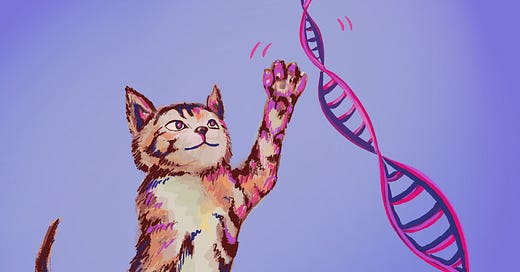CRISPR-Cats: The end of cat allergies?
By: Jonathan Cheng & Jade Tong | Illustration by Jade Tong
CRISPR-Cas9 is a recently discovered technology that has revolutionized the biotechnology industry. Why is it so powerful?
Well, it can target any sequence in the genome and cut the DNA precisely there. This means any gene can be disabled or modified to prevent disease, increase the shelf life of perishable foods, and even prevent allergic reactions.
One of the most prevalent allergies is cat allergies, with nearly 15% of people suffering from them. Fel d 1 is the allergen responsible for 95% of allergic reactions to cats. This protein gets produced in salivary and sebaceous glands in the cat’s skin. The allergen gets spread all over the cats’ fur when they clean themselves, and can even become airborne. Now what if we could just remove that protein?
Recently, in April 2022, a team of researchers from InBio, a biotech company based in Virginia, has been investigating the potential applications of CRISPR-Cas9 to create hypoallergenic cats -- cats that don’t cause allergic reactions!
CH1 and CH2 are the genes that code for the protein Fel d 1. These researchers verified that these genes are not essential for the cat’s survival, allowing them to harness CRISPR without causing adverse effects in cats. Without CH1 and CH2, the cats no longer produce the allergen Fel d 1, allowing humans to interact with cats without inducing allergic reactions!
[Source: A CRISPR Kitty? Gene Editing Breathes New Life into the Hypoallergenic Cat, Fay Lin, genengnews.com]





